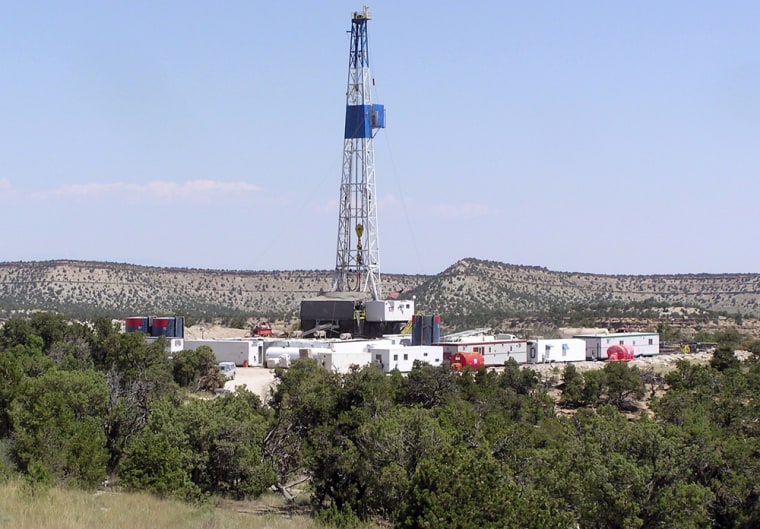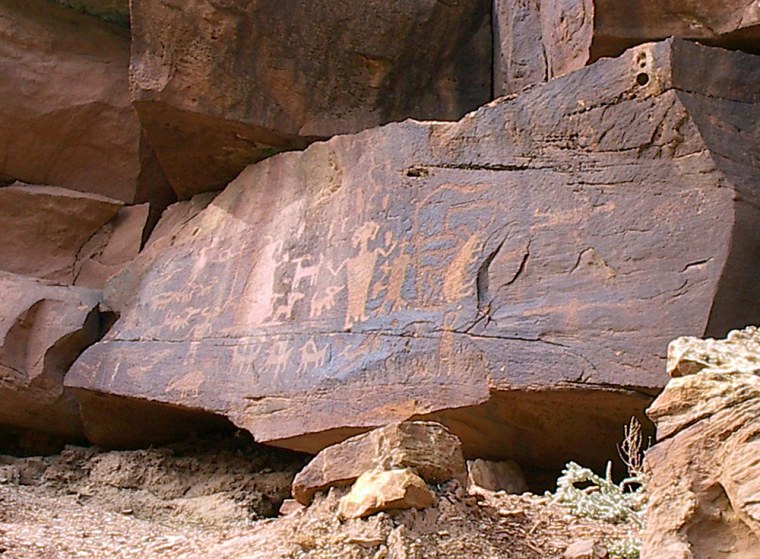The federal government's rush to develop energy on millions of acres of federal land in the West is leaving vast natural and cultural resources languishing, the National Trust for Historic Preservation said in a report Tuesday.
The nation is in danger of losing a critical part of its heritage as archaeological sites and artifacts in such places as Colorado's Canyons of the Ancients National Monument and Utah's Nine Mile Canyon lie undocumented and unprotected, the group said.
"The American experience, the real American experience, didn't begin at Jamestown or Plymouth Rock. It began here in the West, at places like Canyons of the Ancients and Agua Fria" in Arizona, Richard Moe, head of the National Trust, said in a statement.
The preservation group stated that only 17 million acres of the 262 million acres that Bureau of Land Management oversees in 12 Western states have been surveyed to identify cultural resources.
Concerns about the bureau's ability to preserve that past led the private, nonprofit National Trust to declare the entire National Landscape Conservation System, created by the Clinton administration, to be endangered. The conservation system covers about 26 million acres of BLM land and includes national monuments, conservation areas, historic and scenic trails.
"There are people all over the West who love these sites and are working hard to protect them," Moe said. "But you can't protect them if you don't know where they are."
Moe said the BLM doesn't have the money or staff to survey much of its land or adequately patrol and protect such resources as ancient cliff dwellings and petroglyphs from the growing number of off-road vehicles and other threats.
At the 164,000-acre Canyons of the Ancients in southwestern Colorado, only one ranger is in charge of law enforcement. More than 6,000 archaeological sites have been recorded there and thousands more are believed to exist.
Bureau response
BLM spokeswoman Celia Boddington said the agency's finances are more complex than portrayed in the report. She said employees funded by one program often help with others, including cultural preservation.
Boddington also disputed that energy development is overwhelming the agency's other duties.

"We are required by law to manage for multiple uses of the land. In cases where we permit energy development, that's a tiny proportion of public lands," Boddington said.
Still, only 6 percent of BLM's 262 million acres have been surveyed for cultural resources, said Destry Jarvis, who wrote the National Trust's report. Jarvis was an assistant director of the National Park Service during the Clinton administration.
The 2006 federal budget gives the BLM $2.27 per acre to manage the National Landscape Conservation System while it provides $19 per acre to manage national parks, Moe said. The proposed budget recommends cutting the BLM conservation system's 178 rangers by seven or eight, he said.
Further sapping the BLM is a mandate under federal energy policy to speed up approval of energy development on public lands, according to the National Trust's report. Funds that should be used for more surveys are being siphoned off to assess and protect sites where companies and ranchers want to mine, graze livestock or drill oil and gas, Jarvis said.
Companies should be required to pay their share and the government should request adequate funding to handle the increasing number of leases on BLM land, said Jarvis, an independent consultant.
Making way for 'thumper trucks'
Besides diverting staff and funding, Moe said, energy development threatens ancient dwellings and sites with its heavy traffic, new roads and "thumper trucks," which pound the ground and send shockwaves to pinpoint oil and gas deposits.

About 85 percent of the Canyons of the Ancients is under lease for energy development. Up to 2,000 natural gas wells are proposed in the 70-mile-long Nine Mile Canyon near Price, Utah, dubbed the longest art gallery in the world because of more than 10,000 American Indian petroglyphs on its walls.
Moe acknowledged that the BLM is charged with managing its land for multiple uses. "Obviously, we need oil and gas and need to drill on public lands, but it's a question of where we do it and at what cost," Moe said.
Despite the country's "difficult fiscal and political environment," he recommend that Congress increase the BLM's $15 million yearly budget for cultural resources to $50 million in five years.
His other recommendations are to:
- Comprehensively survey BLM lands that haven't been checked for cultural and historic resources.
- Pass legislation codifying the National Landscape Conservation System, which was created by administrative order.
- Work with Congress to start a foundation to raise private funds, similar to ones that work with the U.S. Fish and Wildlife Service and the National Park Service.
Additional background is online at www.nationaltrust.org/public_lands/.
